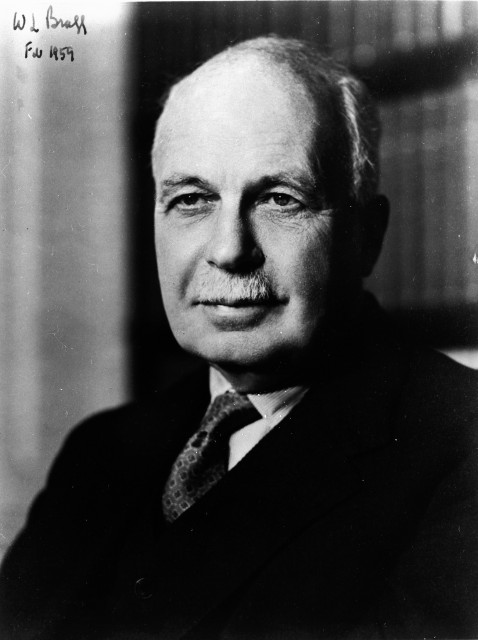Sir (William) Lawrence Bragg
1890-1971

The Bragg equation (or law) is basic to modern X-ray diffraction, a process used to analyze crystal structures by studying the characteristic patterns of X-rays that deviate from their original paths because of closely spaced atoms in the crystal. Bragg used this methodology to show that in rock salt the two kinds of ions, sodium and chloride, are arranged alternately in a cubic lattice. Using the X-ray spectrometer, a device which measures X-ray wavelengths, he and his father, Sir William (Henry) Bragg, determined many other atomic arrangements, including that of carbon in diamonds. In 1915, they were jointly awarded the Nobel Prize in Physics. Lawrence Bragg studied the structures of silicates, metals, alloys and proteins. As Director of the Royal Institution (London), he promoted science education for school children, teachers, and the general public, and was a popular and successful lecturer in person and on radio and television.
Sponsor: Alexander Tulinsky
Location in chemistry building: Fourth Floor; Elevator area East Wall; Sequence 4
Source: American Institute of Physics